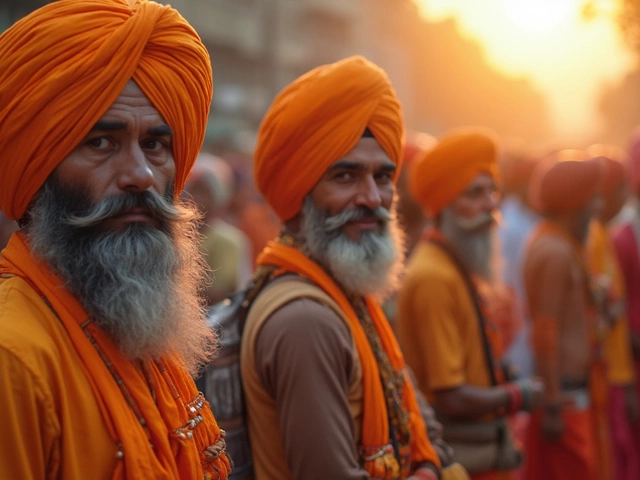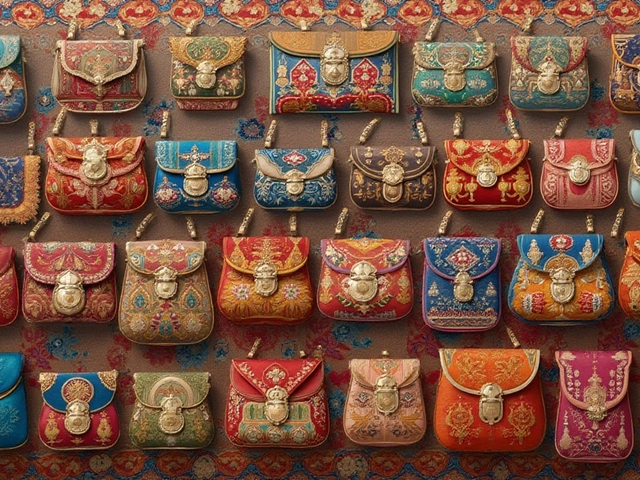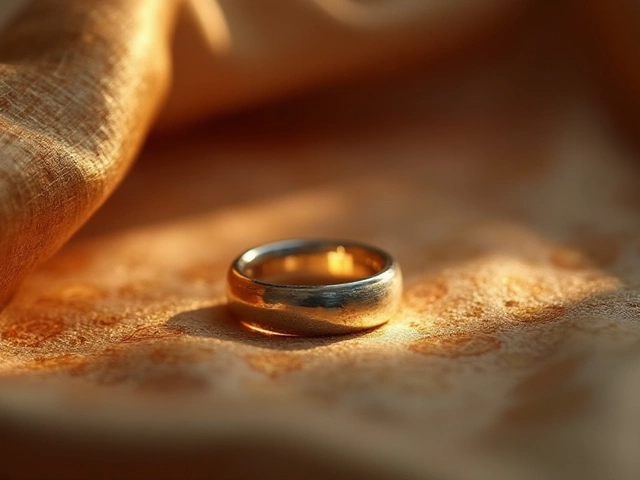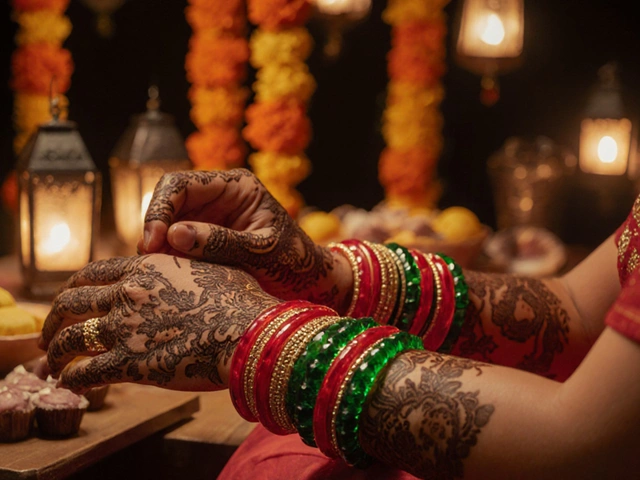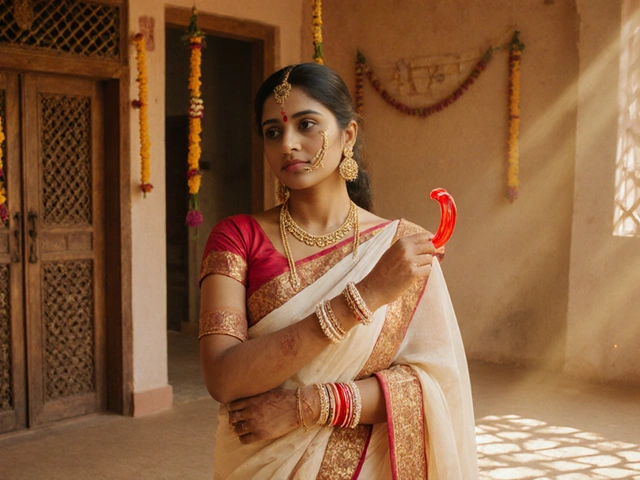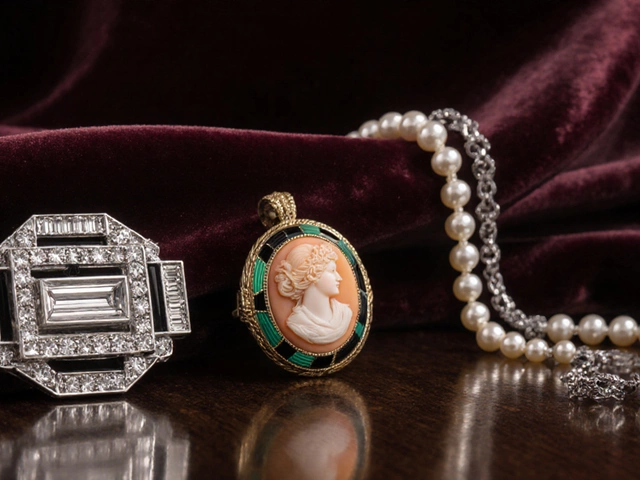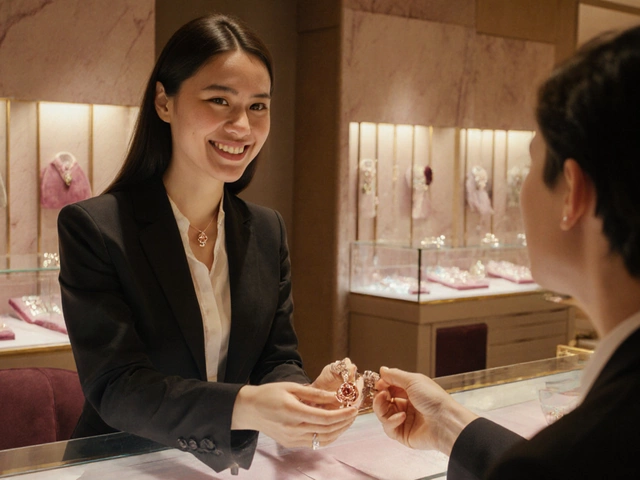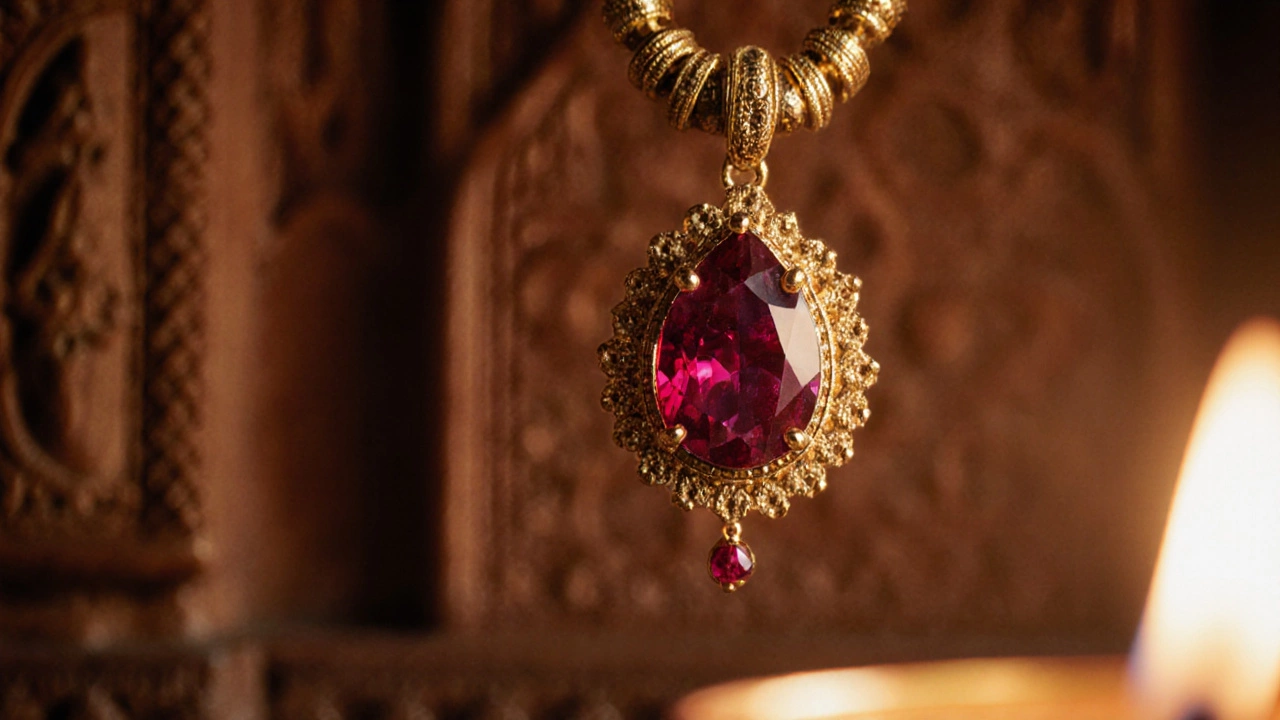
Ruby Temple Jewelry Value Calculator
Input Details
Estimated Value
Based on 2025 market rates
$0.00
USD estimate
Key factors affecting value:
- Carat weight and cut quality (rose/cabochon preferred)
- Gold purity (22k is standard for temple jewelry)
- Setting technique (prabha, meenakari)
- Certification and origin
Why this matters: As the article states, a genuine 2-carat ruby in 22k gold typically ranges from $2,400 to $4,800. Our calculator uses these industry standards to provide realistic estimates based on the factors you select.
Key Takeaways
- Ruby tops the list as the most beloved gemstone in Indian temple jewellery.
- The stone’s rich red hue symbolizes power, passion, and protection in Hindu mythology.
- South Indian temples favored ruby for its durability and regal appearance, while North India leaned toward emerald and sapphire for specific deities.
- When buying ruby temple pieces, verify carat weight, cut quality, and gold purity to avoid imitations.
- Proper care-gentle cleaning, safe storage, and occasional professional polishing-keeps ruby jewellery radiant for generations.
What makes a gem "temple‑worthy"?
In the world of Temple jewellery India is a traditional style of gold adornments crafted for worship and ceremonies, a gemstone must satisfy three criteria: cultural symbolism, durability, and visual impact. Historically, artisans chose stones that aligned with Hindu deities-ruby for the fierce goddess Durga, emerald for the compassionate god Krishna, sapphire for the calm god Shiva, and so on. Durability matters because temple pieces are handled daily during puja; a hard stone resists chipping when set in intricate gold filigree.
Ruby’s royal rise in Indian temples
Ruby is a red corundum valued for its hardness (9 on Mohs scale) and deep crimson color. Its mythic roots reach back to the Vedic texts where the red hue represents the fire element (Agni) and the life‑force (Prana). Temples across South India-especially in Tamil Nadu and Karnataka-have long featured ruby‑set crowns, necklaces, and mangalsutras because the stone’s firmness matches the region’s preference for heavy gold work.
Royal patronage amplified ruby’s status. The Vijayanagara Empire (14th-17th centuries) commissioned ruby‑encrusted net‑like collars (known as kundalams) for deities, a tradition that trickles down to modern craftspersons. By the 19th century, British catalogues listed "Ruby Temple Ornaments" as the most demanded export from Madras.
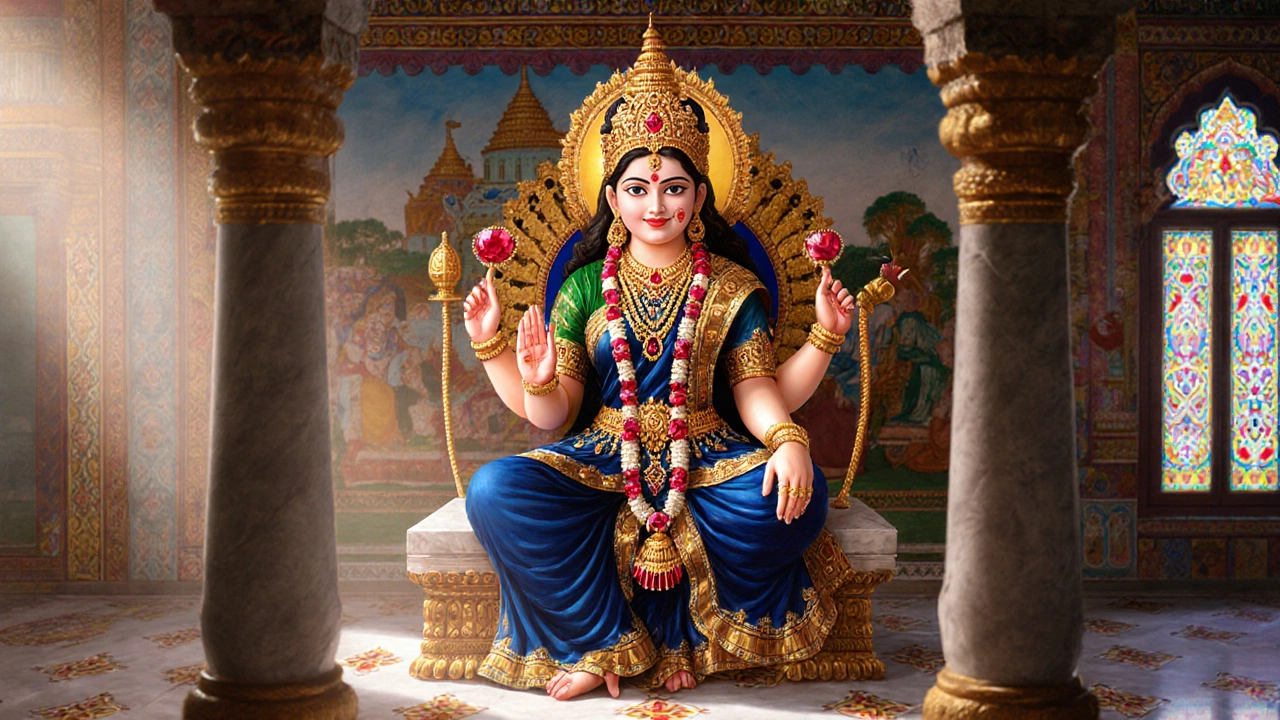
How ruby stacks up against other favoured gems
| Gemstone | Hardness (Mohs) | Cultural Symbolism | Typical Settings | Average Price per Carat (USD 2025) |
|---|---|---|---|---|
| Ruby | 9 | Power, protection, passion | Gold filigree, meenakari, prabha (raised) setting | 1,200-2,500 |
| Emerald | 7.5-8 | Fertility, wisdom, love | Bezel, claw, lapidary settings | 800-1,600 |
| Sapphire | 9 | Truth, calm, divine insight | Channel, pavé | 900-1,700 |
| Diamond | 10 | Purity, invincibility | Micro‑pavé, star setting | 2,500-5,000 |
| Coral | 3-4 (organic) | Protection, fertility | Open‑work, garnet‑style | 100-300 |
The table shows ruby leading in cultural weight and durability, while diamond tops price but appears less often in traditional temple pieces because its brilliance clashes with the matte gold aesthetic prized in rituals.
Regional preferences within India
South India’s Dravidian temples-dedicated to Meenakshi, Venkateswara, and Ganesha-consistently showcase ruby. The stone’s fiery hue matches the vivid temple murals and bright tanjore paintings. In contrast, North Indian Nagara‑style temples often incorporate emerald and sapphire in deities’ crowns, reflecting the region’s historic trade links with Persia and the Mughal love for cool‑toned gems.
Kerala’s ‘Navaratna’ collections (the nine‑gem tradition) place ruby at the centre, surrounded by other stones like pearl and topaz. This pattern reinforces ruby’s supremacy in a spiritual context: it is the “king” among the nine.
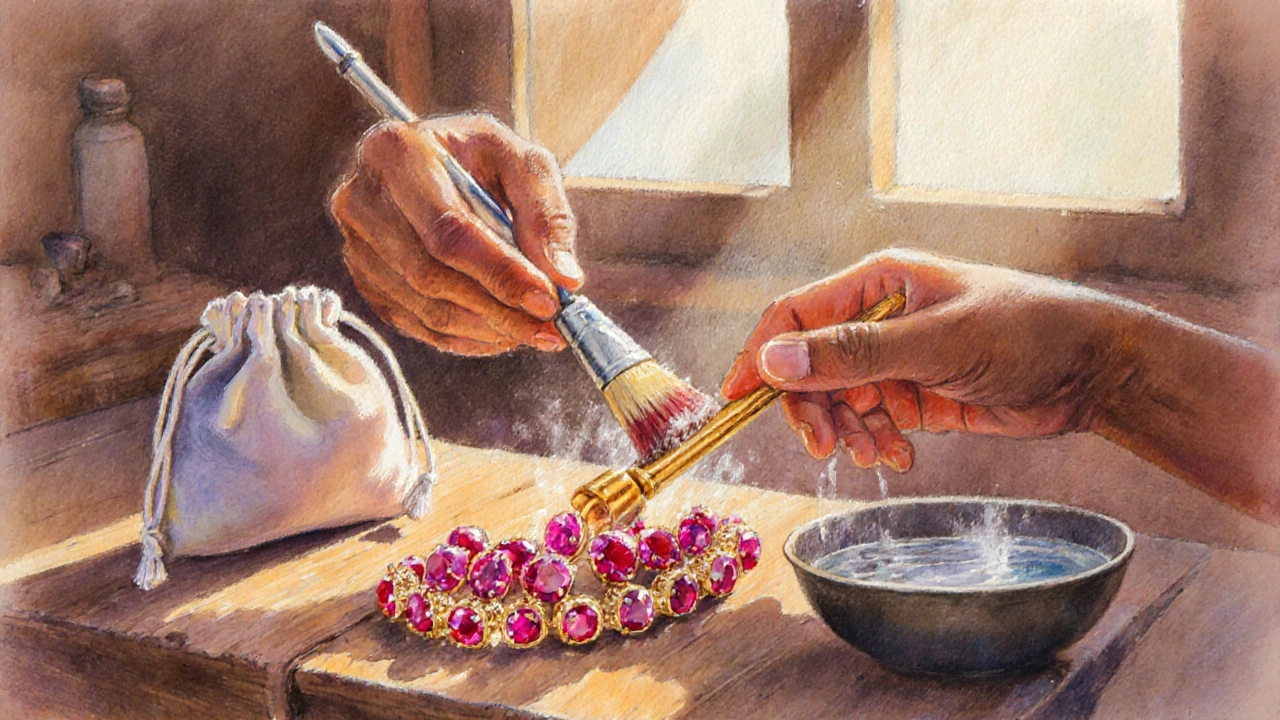
Buying guide: spotting genuine ruby temple jewellery
- Check the gold purity. Authentic temple pieces use 22‑carat gold (916 purity) or pure silver for ornamental sets. Look for the hallmark “916” stamped inside the clasp.
- Assess the ruby’s cut. Traditional Indian cuts are “rose” or “cabochon” to maximize the stone’s red depth. A well‑cut ruby shows a “star‑shaped” asterism under light.
- Inspect the setting. Temple artisans use a technique called “prabha” where the stone sits on a raised gold platform; if the setting looks purely modern (e.g., invisible bezel), it may be a replica.
- Request a certification. Reputable dealers provide a GIA or IGI report confirming the ruby’s origin, treatment status (most Indian rubies are heat‑treated), and carat weight.
- Compare prices. In 2025, a genuine 2‑carat temple ruby in 22‑carat gold typically ranges from $2,400 to $4,800. Prices far below this suggest inferior quality or synthetic stones.
When buying online, prioritize sellers offering detailed photographs, a return policy, and a “Hallmark” authentication card.
Care & maintenance for ruby temple pieces
- Gentle cleaning. Use lukewarm water with a few drops of mild soap, soak for a minute, then brush with a soft toothbrush. Avoid harsh chemicals that can dull gold plating.
- Dry thoroughly. Pat the piece with a lint‑free cloth; moisture can lead to tarnish on silver in mixed‑metal settings.
- Store separately. Keep ruby jewellery in a soft pouch away from other hard stones (like diamond) that could cause scratches.
- Professional polishing. Schedule a gold‑smith visit every 2-3 years to re‑solder any loose prongs and restore the original shine.
- Avoid extreme heat. Although ruby tolerates high temperatures, sudden thermal shifts can stress gold alloys and cause micro‑cracks.
Why is ruby preferred over diamond in temple jewellery?
Ruby’s deep red matches the vibrant colors of temple walls and the spiritual symbolism of fire, whereas diamond’s sparkle can look out of place in the subdued, reverent aesthetic of worship settings.
Can synthetic rubies be used in authentic temple pieces?
Traditional temple jewellery values natural rubies because the stone’s historic provenance is part of the ritual. While synthetic rubies are chemically identical, they lack the cultural cachet and often fetch lower market value.
What does the term “Navaratna” mean?
Navaratna translates to “nine gems” and represents a specific arrangement of ruby, pearl, red coral, emerald, yellow sapphire, blue sapphire, diamond, hessonite, and cat’s eye. The ruby occupies the central position, reinforcing its supremacy in Indian astrology and temple art.
How can I tell if a ruby has been heat‑treated?
Heat treatment often leaves faint surface “lakes” where the stone’s original color was altered. A certified gem‑lab report will explicitly note any treatment. Visual clues include a uniform, vivid red without natural inclusions.
Is ruby suitable for everyday wear?
Yes. With a hardness of 9, ruby resists scratches, making it ideal for daily‑wear pieces like temple necklaces and bangles that are touched frequently during rituals.

